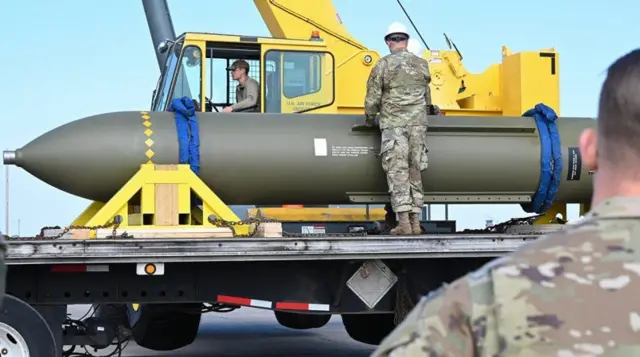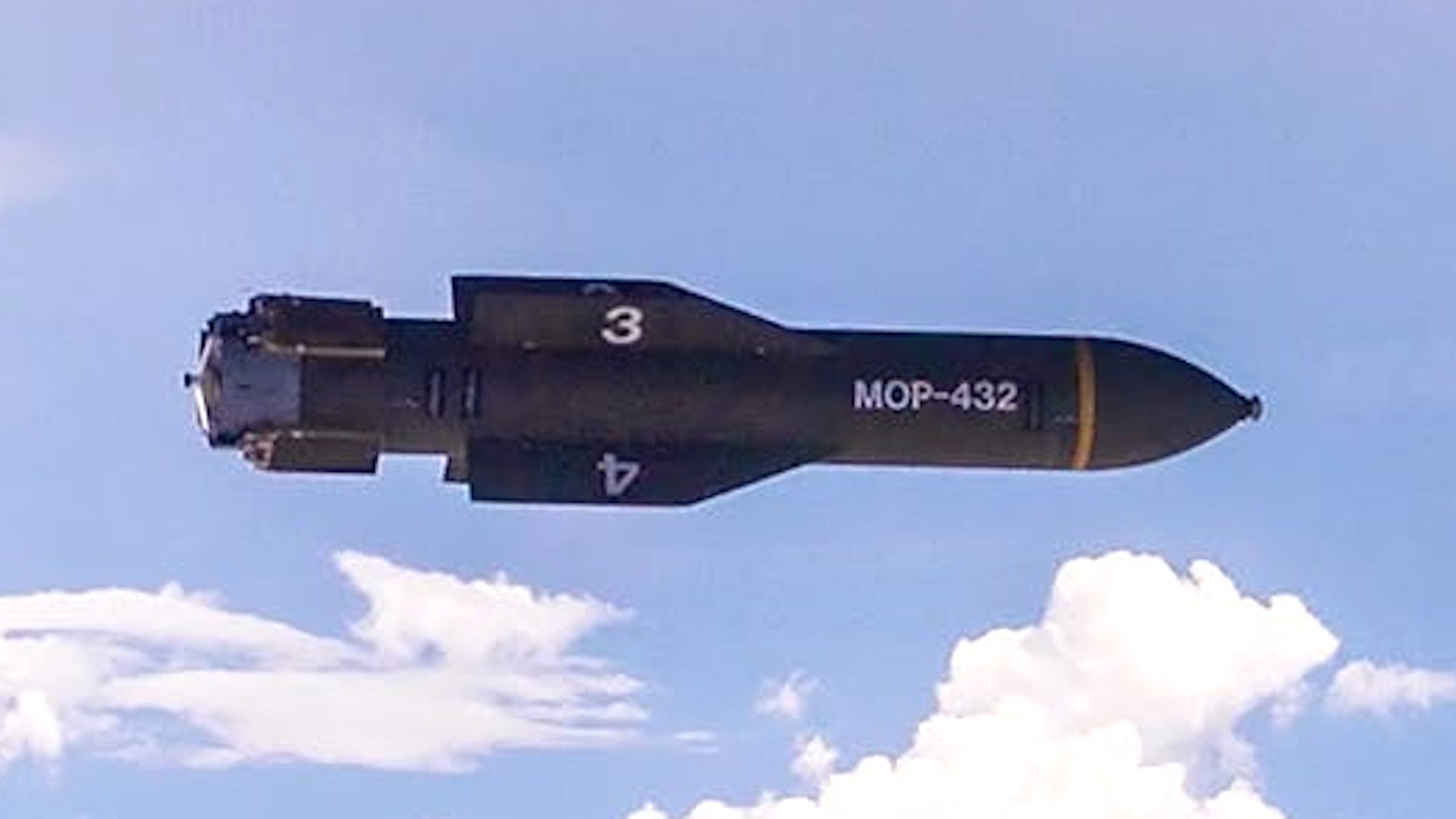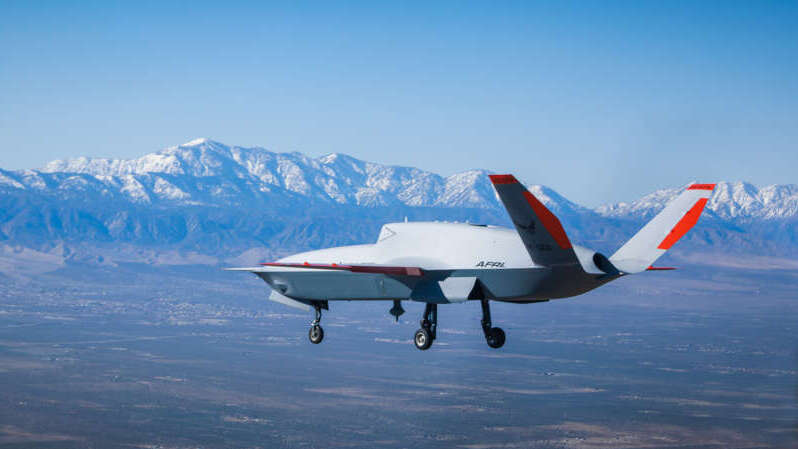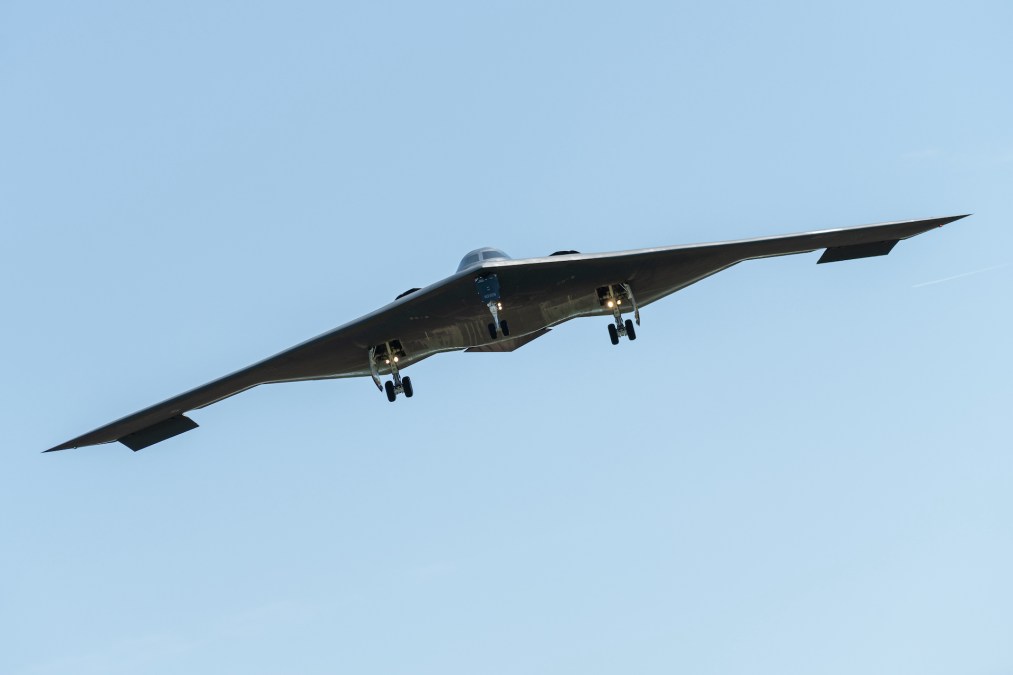
The recent combat debut of the GBU-57/B Massive Ordnance Penetrator, America’s most powerful conventional bunker-busting bomb, marked a significant moment in military technology and strategy. Strikes against Iranian nuclear facilities last month brought this formidable weapon into the public eye, underscoring its unique capability to reach targets buried deep beneath the earth.
For years, the need to hold critical, hardened underground sites at risk without resorting to nuclear weapons has been a driving force in military planning. The GBU-57, a non-nuclear munition weighing an immense 30,000 pounds, was specifically developed with this challenge in mind, particularly the task of neutralizing facilities like the Fordow Fuel Enrichment Plant in Iran, known to be situated far below ground.
The employment of the MOP in June highlighted its strategic importance. Fourteen of these massive bombs were dropped across two Iranian nuclear sites. Twelve were directed at the Fordow facility, while two struck the Natanz facility. The B-2 stealth bomber, currently the only aircraft certified to carry the weapon operationally, delivered these ordnance on target.

The tactics employed at Fordow demonstrated the precision intended for the weapon. B-2s dropped all 12 MOPs on just two specific impact points, with six bombs successively hitting each location. This layered approach is designed to burrow down through layers of rock and soil to reach the buried target below.
Pentagon officials have described the capabilities offered by the existing fuzes for the MOPs as being “on full display” during the strikes. Chairman of the Joint Chiefs of Staff U.S. Air Force Gen. Dan “Razin” Caine provided insight into the meticulous planning, stating that each of the 12 MOPs dropped on Fordow had their “fuze programmed bespokely” allowing “each weapon to achieve a particular effect inside the target.” He added that all the bombs “had a unique, desired impact angle, arrival, [and] final heading.”

This first combat use validates the MOP’s design purpose: to reach deeply buried and hardened targets. The Fordow facility is notably built into the side of a mountain, estimated to be around 80 meters, or about 300 feet, beneath soil and rock, a depth far beyond the reach of most conventional munitions.
The development of the GBU-57 was a direct response to the limitations observed with earlier bunker buster bombs, such as the GBU-28 and GBU-37, during the 2003 invasion of Iraq. These smaller munitions reportedly yielded poor penetration and inadequate destruction levels against hardened targets during that conflict, highlighting a critical gap in the U.S. arsenal.

The Air Force Research Laboratory’s Munitions Directorate spearheaded the design and testing efforts, collaborating with Boeing to create what was envisioned as the ultimate bunker buster. The development cost for this formidable weapon is reported to have been around $400 million, a testament to the complexity and advanced engineering required.
A look at the physical characteristics of the MOP underscores its sheer power. Weighing 30,000 pounds, it measures 20.5 feet in length and has a diameter of 31.5 inches. Its guidance system relies on GPS and Inertial Navigation System (INS) inputs to ensure it strikes precisely within meters of its intended target.
A critical feature enabling its deep penetration is its construction. Only about 5,300 pounds of the total weight comes from the polymer-bonded explosives warhead. The vast majority, approximately 80%, is made up of a high-density steel alloy hull. This thick, hardened casing is essential, as Masao Dahlgren, a fellow working on missile defense for the Centre for Strategic and International Studies, explained, “To defeat these deeply buried targets, these weapons need to be designed with rather thick casings of steel, hardened steel, to sort of punch through these layers of rock.”

The specialized fuzing system is equally vital. Unlike conventional bombs that detonate on impact, a penetrator needs to delay detonation until it reaches the desired depth or chamber. Dahlgren noted that for such weapons, “you need an explosive that’s not going to immediately explode under that much shock and pressure” encountered while burrowing through hard materials.
The MOP utilizes a large penetrator smart fuze designed to dictate detonation based on impact depth, aiming to ensure the destruction of the underground structure. The core components include the KMU-612 tail-kit, which houses the GPS-assisted INS guidance package and other necessary systems, and the BLU-127/B, the penetrating “warhead” section.

Reliable fuzing is a paramount concern for bunker busters like the MOP, especially considering the extreme forces they endure. As noted previously by TWZ, “Reliable fuzing, in general, is particularly important for bunker buster bombs, the components of which have to be able to withstand additional forces as the munition burrows through hard material.” For munitions designed for very deep penetration, there are “additional specialized fuzing needs,” particularly when pre-strike intelligence on exact depth or layout is limited.
Interest in advanced fuzing remains high. Development areas have long included “advanced void-sensing fuzes that can detect when a munition has breached into a sufficiently large space, such as a room in an underground facility.” Another potentially useful addition would be “A fuze that is able to just effectively ‘count’ floors to help determine depth to detonate the bomb at a certain level for maximum damage.”

The GBU-57 has already undergone multiple upgrades since it first entered service in the early 2010s, with particular focus placed on improving its fuzing arrangements. The recent combat employment in Iran will undoubtedly provide invaluable lessons learned to inform future modifications and enhancements to the weapon and its fuzing system.
The U.S. Air Force is actively exploring options to support the GBU-57 program. A recent contracting notice put out by the Air Force Life Cycle Management Center (AFLCMC) signaled interest in assistance for developing improved fuzes and finding additional sources for the production of key components.
The notice specifically mentions interest in “Fuze development and integration into the components of the GBU-57 weapon system, to include integration and software modification within the KMU-612 tail-kit and the BLU-127 fuzing system.” This highlights the ongoing effort to refine the weapon’s core functionality.




